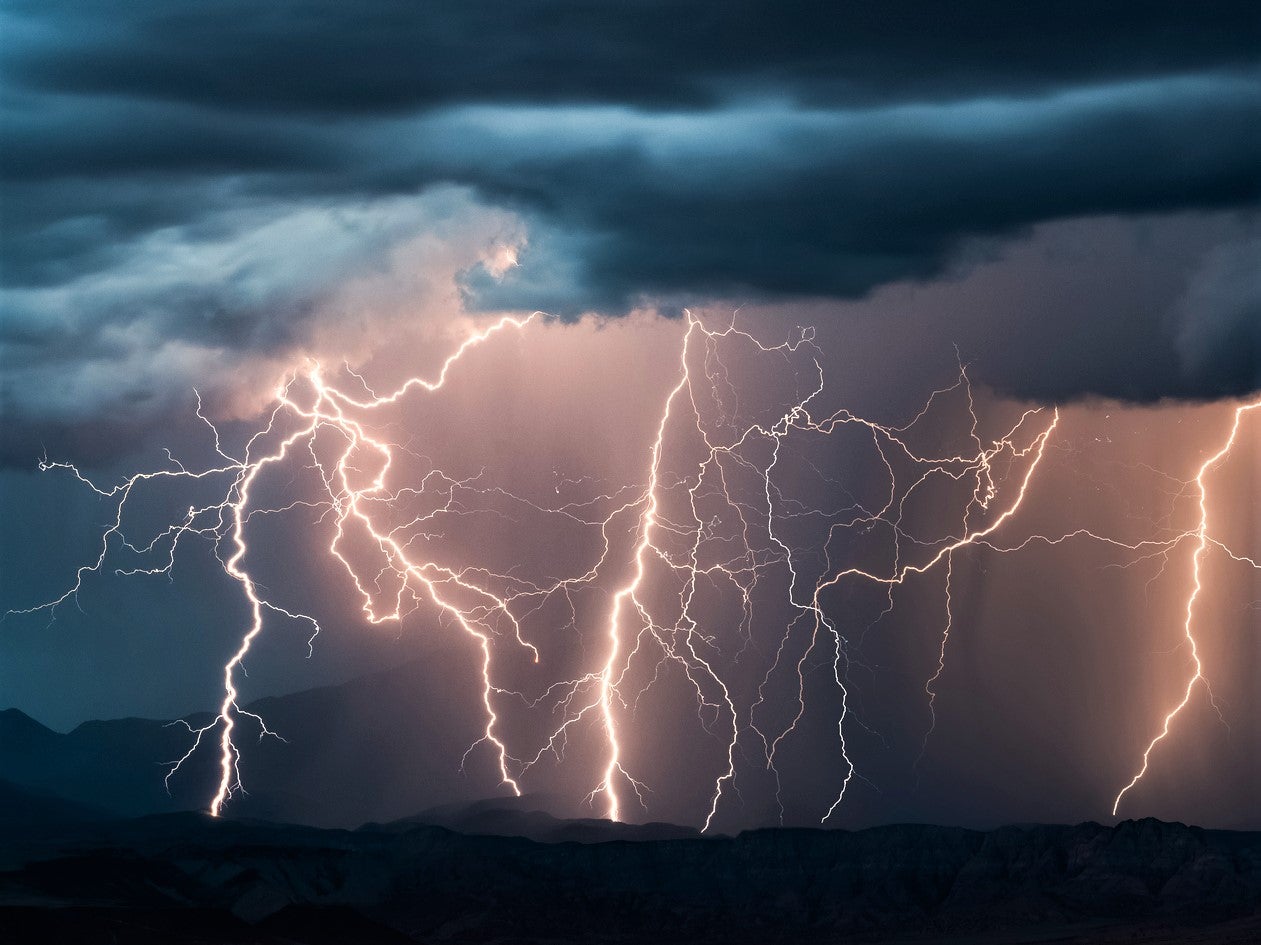Will climate change increase the risk of lightning strikes?
Global warming linked to steadily increasing prevalence of heavy thunderstorms

With the planet currently on course to record a 3C temperature increase by the end of the century unless world governments can succeed in cutting emissions and restoring biodiversity to natural spaces, the effects of global warming on weather systems we have taken for granted for so long are already becoming apparent.
From the unseasonably dry April and showery May we have experienced in Britain this spring to the threat of erratic rainfall patterns endangering tea leaf crops in Kenya, India and Sri Lanka, the evidence is all around us.
One of the most spectacular manifestations of the climate crisis so far was reported last month by researchers using the World Wide Lightning Location Network to monitor lightning strikes in the Arctic.
Their findings, first published in Geophysical Research Letters, revealed that the number of strikes recorded during the summer months between 2010 and 2020 had ratched up from some 18,000 strikes at the start of the decade to more than 150,000 by 2020.
Over the same time period, temperatures at latitudes above 65°N had increased by an average of 0.3C, making intense summer thunderstorms more likely.
That tallies with research conducted by the University of California and published in Science magazine in November 2014 that concluded that a one degree Celsius increase in temperature would increase the frequency of lightning strikes by 12 per cent, upping the ante on earlier findings by Professor Colin Price of Tel Aviv University, who had put the anticipated increase at 10 per cent.
Warmer atmospheres absorb a greater quantity of moisture so increased humidity in the air means harsher, more powerful thunderstorms and thus more likelihood of lightning (not to mention outbursts of flash flooding).
“To make lightning a cloud needs to generate an electric field, which it does using water,” the report’s lead author David Romps explained.
“The more water a cloud processes, the more lightning we should expect. And the more energy available to a cloud, the faster it rises and longer it can keep water drops and ice particles suspended, so, again, the more lightning we should see.”
Assuming that 12 per cent figure is accurate, the continental United States can expect to see an increase in lightning strikes per year from the present 20 million to 30 million by 2100, Climate Central calculates.
This is a problem not least because lightning is a primary trigger for forest fires, which are themselves likely to become more prevalent if droughts worsen, and because bolts generate nitrogen oxides, according to the American Association for the Advancement of Science, which in turn encourage greenhouse gas composition, turning up the heat still further.
As for the direct threat humans face from lightning bolts, the chance of being hit of course remains very low, especially in the UK, but predictions of higher temperatures creating more storms naturally means the probability increases there too.
The Royal Society for the Prevention of Accidents, founded in 1916, reports that an estimated 300,000 lightning bolts currently strike the ground in Britain every year, with 30-60 people hit and only around three of those cases likely to be fatal.
But any death caused by a freak occurrence like this is all the more tragic for being so unlikely, a fact we were recently so painfully reminded of in the case of nine-year-old footballer Jordan Banks from Blackpool, who was hit by lightning during a match and subsequently died in hospital.
In another alarming recent reminder of the power of stray bolts, an entire herd of 18 Asiatic elephants was wiped out by lightning in the northeastern state of Assam’s protected Kandali Forest.
The present global rate of lightning strikes per day stands at 8 million - or an astonishing 100 per second.
It seems clear that we can expect those figures to jump without significant international cooperation on climate intervention and, with it, a not insignificant increase in danger to human and animal life, either from direct strikes or associated wildfires and tree toppling.



Join our commenting forum
Join thought-provoking conversations, follow other Independent readers and see their replies
Comments